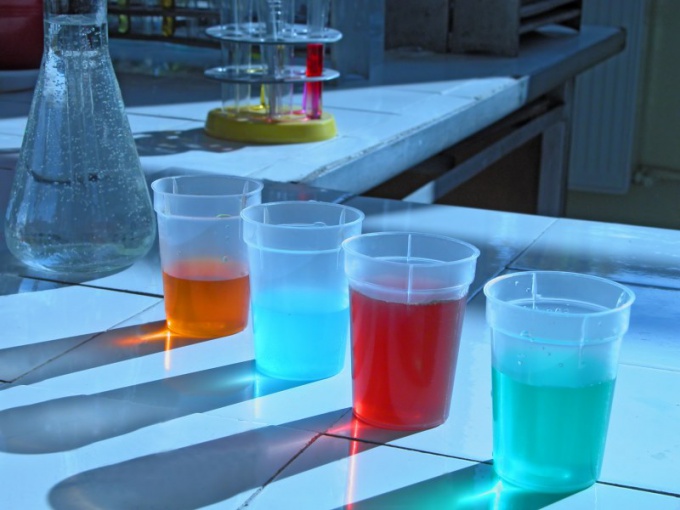Instruction
1
If there are two solution, one concentration and the other with percent, to prepare V ml of a solution of a given concentration of b (provided that b is less and no more), take x milliliters of a percent solution and (V – x) ml with a percent solution. Given that a>b>c, write down the equation, from which we find x: ax+s•(V – x)= bV, then x = V•(b-c)/(a-c).
2
If you take with for 0, the previous equation takes the form x = V•b/a, ml. making the appropriate substitutions and solve this equation. So you get the proportions in which you need to take the original solutions, for the preparation of a solution of a given concentration.
3
For dilution of concentrated solutions use the rule of mixing. For example, for the preparation of the b percentage of the solution take two of the solution with the concentrations of a and C per cent, provided that a>b
4
Record the condition and the result. First, write the concentration of the prepared solution (b) and diagonally upward to the right of this value, write one of the answers that refers to a% of the solution obtained by difference between the specified concentrations (b-C), and from above downward to the right, record the second response (a-b) related to the% solution. Get the answers you need to record in the appropriate solutions, i.e., opposite to x and y.
5
For clarity, to get from 30% (x – R-R with conc. and%) and 15% (p-p y with conc. with%) a solution of 20%(b), follow the steps described above: 20-15=5 and 30-20=10. Thus, for preparing 20% solution mix 5 parts of 30% R-RA and 10 parts of 15% R-RA. The result is 15 parts 20% R-RA.



